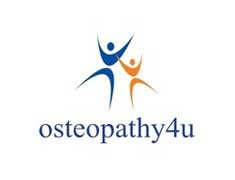Osteopathy
Osteopathic Treatment
Osteopaths use their hands, both to investigate the underlying causes of pain and to carry out treatment using a variety of manipulative techniques. These may include the comfortable stretching of muscle and ligament, rhythmic joint movements or joint manipulation to improve the range of movement of a joint.
Gentle releasing techniques are often used, particularly when treating children or elderly patients. Osteopaths employ a wide range of treatment methods depending on your age, physique and particular problem.
Treatment Methods
Each of the following methods has a role in osteopathic treatment:
- Massage and stretching techniques
- Articulation techniques
- Muscle energy techniques
- Counterstrain techniques
- Functional techniques
- Myofascial release
- Joint manipulation
Pain is often centred on a restricted joint which has became jammed or inflamed, with the surrounding muscles going into spasm and maintaining the pain. Joint manipulation involves putting the restricted joint through a very small stretching movement at speed - this just feels like a quick push on the joint. Separating the joint surfaces like this causes a release in the pressure within the joint. It is this change in pressure which causes the clicking noise and the result is a joint that moves more freely. Any "click" is a by-product of the manipulation - in other words, it does not have to happen for the treatment to be effective.
Exercises
You may also be given exercises to do. These are an integral part of the treatment - this is how you can treat yourself. They may be used, for example, to stretch shortened muscles or to strengthen weak ones, as part of a treatment programme, or they may be something that you will need to do long-term in order to manage a problem yourself rather than having to keep coming back for treatment.
Long Term Preventative Care
Osteopathic treatment is aimed not only at the relief of symptoms, but towards helping the body function better in all respects. One of the primary aims of osteopathy is prevention and the development of long-term solutions. The key to this is increasing patients' awareness of the causes of problems, and giving them the help they need to take responsibility for their health.
If you suffer from...
- Back & neck pain
- Upper & lower limb injuries
- Shoulder, rib & jaw injuries
- Sciatic and other nerve pain
- Arthritic pain
- Sports injuries
- Whiplash affected disorders
- Circulatory and digestive problems
- Muscular injuries and sprains
- Post-injury rehabilitation
- Acute / traumatic injuries
- Stress & anxiety
- Gait biomechanics & orthotics
